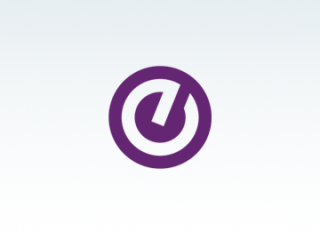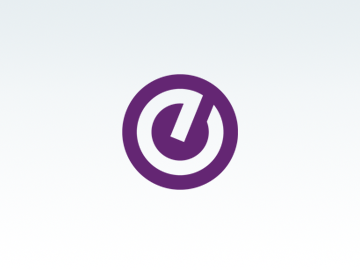5 ways IT modernization drives success

A modern IT infrastructure can be a defining success factor for higher education, but too many institutions let adoption goals lapse—whether due to stalled projects, perceived costs, or a lack of skilled IT resources. With the COVID-19 disruptions of 2020 extending into 2021, delaying IT modernization is no longer a choice. It’s time for colleges and universities to accelerate their technology modernization—not only to compete for students, but to survive.
With faculty, staff, and students logging in from home to work and attend classes, COVID-19 has created a need for increased IT resilience, agility, adaptability, and scalability. To make the changes necessary to support this new learning and working environment, education leaders are investing in better systems, more efficient processes, and the digital infrastructure needed to keep pace with the changing world.
Here are five ways IT modernization can help higher education move into the future.
1. Cloud
While many institutions already have some workloads in the cloud, system-wide migration is becoming a top priority in higher education. Cloud-based solutions help improve security, simplify day-to-day infrastructure management, reduce costs, and enable IT teams to focus on core institutional goals. Cloud solutions are also a critical element in improving recruiting, admissions, fundraising, student experience, and staff workflows.
Particularly for today’s tech-savvy students, users expect an easy, complete, consumer-level experience as they attend classes and utilize services online. With cloud technology, IT departments can provide around-the-clock access to secure, reliable networks and the ability to create, deliver, and share information institution-wide from any device.
The cloud is an investment for the short- and long-term. In addition to supporting campus needs and improving business resiliency, the open, flexible architecture of a SaaS-based ecosystem gives institutions space to innovate and eases the burden of integrating new solutions.
Learn more about the benefits of the cloud.
Modernization in action
For Waukesha County Technical College (WCTC)—one of Wisconsin’s top institutions for professional and workforce development—outsourcing its core technology infrastructure to the cloud became the most cost-efficient option for the future. By shifting data center management to a third party, reducing on-premises hardware costs, and avoiding the addition of new personnel to keep up with IT demands, WCTC projected $1.5 million in savings over three years.
System-wide migration is no small feat, but WCTC managed the finer details by choosing the right partner and carefully refining the contract to meet their needs. Ultimately, WCTC created a cloud roadmap that would get them where they wanted to go, starting by implementing individual service-as-a-software (SaaS) applications before scaling up to the enterprise resource planning (ERP) level.
2. Analytics
In areas such as recruitment, enrollment, and retention, higher education leaders are increasingly turning to analytics to gain insights into their processes and constituents. While institutions have long been collecting data, few fully utilize its potential for strategic planning. Predictive analytics can maximize the value of resources, inform real-time decision-making, and holistically improve the student experience.
To create and maintain a robust analytics program, institutions will need infrastructures sophisticated enough to process large volumes of high-quality data, as well as dedicated tech talent to manage it all. It’s a weighty investment, but as digital solutions accelerate, analytics will become critical for institutional success.
By leveraging the speed and flexibility of cloud-based services, higher education leaders can tap capabilities that were previously cost-prohibitive. The right partner and infrastructure can help establish and maintain campus-wide analytics, uniting disparate applications and departments with a reliable source for actionable data.
Modernization in action
Serving a diverse student body—including many first-time, first-generation students— the University of La Verne in Southern California needed an analytics solution that could bring all its data under one roof—and in doing so, provide deep insights into the different needs of its constituents. Questions about course gaps or the effective utilization of classroom space are now easily and accurately answered by user-friendly dashboards that automatically aggregate the necessary data.
Implementing comprehensive analytics requires institution-wide buy-in, however, which made a change management program crucial for the transition. By focusing their efforts on fostering collaboration across teams and establishing governance policies to ensure data integrity, La Verne has transformed their approach to decision-making.
“Institutions need to treat data as an institutional asset and work backward from that as a goal,” says Dr. Todd Britton, La Verne’s chief information officer and associate vice president. “…Analytics is about more than admissions data. It’s an institutional asset for us to be able to make data-driven decisions. You have to work collaboratively toward a common end.”
3. Automation
Manual, paper-based legacy processes and workflows plague all industries, and higher education is no exception. Before COVID-19, students frequently had to take paper forms around campus to get signatures from different faculty and administrators. This inefficient process became even more challenging as campuses shut down and in-person services became unavailable.
With automated workflows, every function—from admissions and registration to academic records and curriculum management—can be streamlined to gain efficiency. Data from online forms flows into the correct systems without manual entry and necessary follow-up work—such as approvals—kicks in via automated reminders. These workflows not only free up staff time to focus on high-impact work, but also minimize the risk of human error.
Traditional workflow tools may be tied to a particular application, but solutions designed for higher education should be application-independent, allowing data to flow across the span of an institution. With a simplified and seamless user experience, automation boosts productivity and collaboration for staff, while ensuring students get the support and information they need, whenever they need it.
Modernization in action
At Troy University, administrators had no way of determining which students were eligible for CARES Act funding, who needed it, or how to distribute those funds. With more than 13,000 undergraduate students across four campuses, Troy needed a technology solution to efficiently distribute aid.
By employing an automated workflow tool, Troy created a multi-step, online-only process for students to apply for funding. A dynamic form provided all the necessary context for students to determine their eligibility, while auto-filling basic information to simplify the process. After filling in any missing fields, students submitted the form, which was then routed to the financial aid team for evaluation.
The entire process eliminated the need for paper-based routing, minimized human intervention, and most importantly, sped up aid distribution.
4. Artificial intelligence
Artificial intelligence (AI) and machine learning (ML) are all the buzz today, yet few institutions have implemented AI/ML strategies fully. ML helps systems learn and apply rules, with those abilities growing exponentially based on the data they can access. In any predictive model, administrators and staff must be mindful of potential biases when deciding what information will feed the algorithm, but when thoughtfully applied, AI and ML have the potential to create continuous value loops for institutions.
In the next decade, AI and ML could have a profound impact on higher education, particularly in enrollment and retention. For example, data-savvy enrollment teams can predict the number of applicants who will accept admission by combining historical data with external data—such as campus visits and other prospective student activities. With AI, institutions can improve the accuracy and efficiency of enrollment forecasts, with the long-term benefit of ML “learning” as it goes and improving processes year after year.
Modernization in action
The College of Science, Technology and Applied Arts of Trinidad and Tobago (COSTAATT) faced a common dilemma for higher education: the volume of students in need of logistical support vastly outmatched staff resources. In an age where instant communication is becoming the baseline expectation, COSTAATT implemented AI technology to meet the demand.
While AI can enable early alert systems that help direct personalized advising, it can also power chatbots to answer common questions 24/7. Chatbots are familiar for students who spend much of their time online, and by integrating one into their Help Desk page, COSTAAT can provide students with the information they need anytime, anywhere. The staff, meanwhile, is freed up to focus on more high-impact advising activities.
5. ERP systems
Modern ERPs consolidate critical data and deliver it in a single system, giving users the right information at the right time. But rather than thinking about an ERP system in isolation, it can be beneficial to look at how a SaaS ERP solution, in conjunction with other modernization initiatives, can drive synergistic results.
With SaaS ERPs, institutions gain a wealth of new data, not only about users, but about how those users interact with the system. With this information, institutions can more effectively engage prospects, students, and staff, setting them up for a successful experience.
When users log into a SaaS ERP, they’ll be presented with content specific to their roles—and that content can change and adjust based on the time of year. For example, at the beginning of the semester, reports relating to registrations come to the top automatically. And when it’s time for admitted students to notify the institution regarding their decisions, that information is featured for the appropriate employees. When AI and SaaS can work together, users enjoy a seamless experience with better insights at a lower overall cost.
Modernization in action
Naropa University had been using the same legacy software for over 20 years, accumulating customizations and inefficient processes along the way. The prospect of replacing their clunky but familiar ERP with a SaaS solution was initially daunting.
“The old way of thinking was that we wanted to customize the software we used before assessing our own business practices,” says Tyler Kelsch, vice president for operations at Naropa. “Instead, software-as-a-service gives us a backbone—we won’t be able to customize it, so it forces us to look at our business practices and make them more effective and efficient.”
Instead of limiting Naropa, a SaaS solution became a foundation for future success for success, eliminating the need for costly modifications while providing the flexibility to integrate future solutions as needed.
Move forward fearlessly—today
The pandemic has forced universities to evolve faster than ever. By creating a strong digital foundation for all campus activities, colleges and universities can deliver faster online registration; easy-to-use advising and grading tools; more streamlined admission processes; improved personnel, inventory, and financial management; and the intelligent analytic tools needed for better decisions.
Ellucian’s complete SaaS solutions give you access to the cloud’s security and scalability features along with enhanced mobile, self-service, and extensibility tools. Technology partners like Ellucian with AWS can simplify this transition so you can focus on the mission-critical issues of student engagement and learning.




